Roberto Cavalli's history is a captivating fusion of innovation and artistry within the fashion industry. Established in Florence in 1940, he leveraged his artistic family heritage to transform fabric printing. By the 1960s, his pioneering leather prints gained global recognition, positioning him as a prominent designer in the fashion world. His daring animal prints and patchwork designs became iconic during the 70s and 80s, while the introduction of Just Cavalli in 2000 appealed to a younger demographic. Despite navigating controversies related to cultural sensitivity, he significantly influenced the luxury fashion market. As you delve deeper, you'll discover the evolution of his brand and its enduring cultural significance.
Early Life and Influences

Roberto Cavalli's early life serves as a significant backdrop to his illustrious fashion career. Born in Florence on November 15, 1940, he was shaped by a rich tapestry of influences, particularly from his maternal grandfather, a notable Impressionist painter, and his mother, a master tailor. This artistic environment instilled in him a profound appreciation for aesthetics and craftsmanship. However, his childhood was marked by trauma; his father was killed during the Cavriglia massacre by Nazis in 1944, leaving a lasting impact on young Roberto, including a stutter.
In 1957, he attended the Academy of Art in Florence, where he shifted his focus from painting to textiles. This pivot would prove essential, as he discovered a passion for fabric design that would later define his career. His early work revolved around creating distinctive flower prints on knitwear, quickly catching the attention of major Italian hosiery manufacturers. These formative experiences not only honed his skills but also laid the groundwork for his innovative approach to fashion, ultimately transforming his personal name into a global fashion symbol.
Rise to Fashion Fame
Emerging from a foundation of artistic influence and textile innovation, Cavalli quickly gained traction in the fashion industry during the 1960s. His introduction of innovative fabric printing techniques set him apart, as he established a small fabric printing workshop that caught the eye of major Italian hosiery manufacturers. In 1970, his groundbreaking debut collection of printed leather gowns at the Paris Salon for Prêt-à-Porter showcased his patented leather printing process, earning him significant recognition and solidifying his reputation as a trailblazing Italian designer.
Signature Styles and Innovations
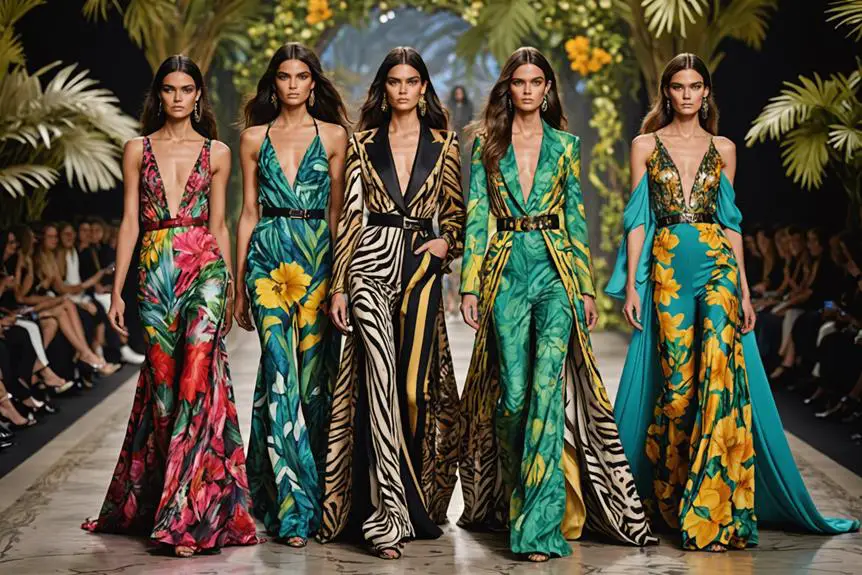
Cavalli's signature styles and innovations have undeniably reshaped the fashion landscape, blending artistic flair with groundbreaking techniques. His pioneering use of innovative printing techniques, especially his patented leather printing process from the early 1970s, revolutionized how patterns are applied to fabrics. You'd notice this transformation in his bold animal prints and intricate patchwork designs, which became hallmarks of his collections throughout the 1970s and 1980s.
The introduction of stretch denim in the 1990s marked a significant shift towards casual luxury, making stylish, form-fitting clothing more accessible. Cavalli Jeans emerged, allowing you to experience comfort without sacrificing flair. The launch of the Just Cavalli diffusion line in 2000 targeted a younger audience, infusing vibrant designs while staying true to the brand's core identity.
Cavalli's maximalist approach is evident in the elaborate embellishments and rich textures that define his creations. This rock-inspired mood not only captivates but also establishes a unique space in luxury fashion. As you explore Cavalli's work, you'll see how these signature animal prints and designs continue to influence and inspire contemporary fashion trends.
Global Brand Expansion
The global brand expansion of Roberto Cavalli has been a remarkable journey, reflecting both strategic vision and market adaptability. By 2001, the brand had successfully broadened its global distribution, reaching over 30 countries, which greatly enhanced its market presence. This strategic move allowed Roberto Cavalli to establish itself as a key player in the luxury fashion industry.
A pivotal moment in this expansion was the launch of Cavalli Jeans in 2000, later rebranded as Just Cavalli. This venture marked an essential step in brand diversification, making the high-end aesthetic more accessible. Additionally, the collaboration with H&M in 2007 to create a high-street collection showcased the brand's ability to adapt to changing consumer demands.
As you explore the evolution of Roberto Cavalli, consider these key milestones:
- Expansion to over 30 countries by 2001
- Launch of Just Cavalli for accessible luxury
- Collaboration with H&M for a high-street line
- 40th anniversary celebrated with a fashion show in Paris
At its peak, Roberto Cavalli operated over 60 boutiques worldwide, cementing its status in luxury fashion.
Controversies and Criticisms
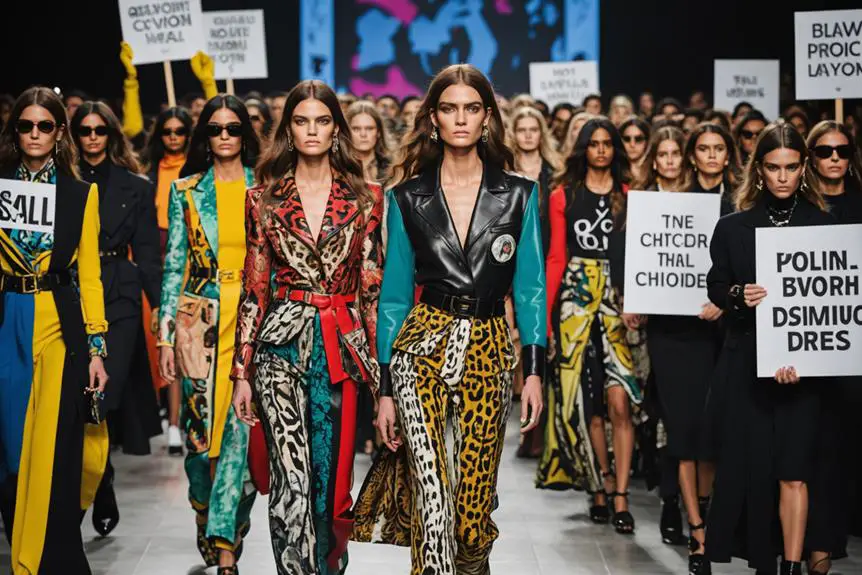
Throughout its history, Roberto Cavalli has faced several controversies that highlight the complexities of cultural sensitivity in fashion. In 2004, the designer encountered backlash when a line of feminine underwear featured Hindu goddesses, prompting the withdrawal of the collection due to widespread criticism. This incident underscores the delicate balance between artistic expression and respect for cultural symbols.
Further complicating Cavalli's reputation, in 2014, the Maktab Tarighat Oveyssi Shahmaghsoudi accused him of copying a sacred emblem for his Just Cavalli branding. Although the complaint was rejected by OHIM, it ignited protests from Sufi students who deemed the logo's resemblance to a sacred icon unacceptable. These protests indicated strong feelings within the community regarding cultural appropriation and the need for accountability in design choices.
Media coverage, including a report by Der Spiegel, shed light on these desecration allegations, sparking heated discussions within the fashion community. The ongoing debates around Cavalli's design ethics reveal a divide; some defend his creativity while others demand greater awareness of cultural sensitivity. Ultimately, these controversies challenge the industry to engage in meaningful conversations about respect and responsibility in fashion design.
Legacy and Cultural Impact
Roberto Cavalli's impact on the fashion industry extends beyond the controversies that have surrounded him. His innovative leather printing technique, patented in the early 1970s, revolutionized fabric design and established him as a leader in luxury fashion. Cavalli's bold and extravagant aesthetic, characterized by vibrant animal prints and intricate designs, has greatly influenced contemporary fashion trends.
Key aspects of Cavalli's legacy include:
- The launch of the Just Cavalli diffusion line in 2000, making the brand accessible to younger consumers.
- Collaborations with high-street retailers, like H&M in 2007, that blurred the lines between luxury and mass-market fashion.
- A global presence that showcases his unique craftsmanship and design vision.
- An enduring cultural impact that continues to inspire new generations of designers.
His work not only reflects a commitment to luxury fashion but also highlights a rich tapestry of creativity that defines fashion history. By maintaining the essence of his extravagant aesthetic, Cavalli has solidified his place in the industry, ensuring that his influence will resonate for years to come.
Future Directions and Vision
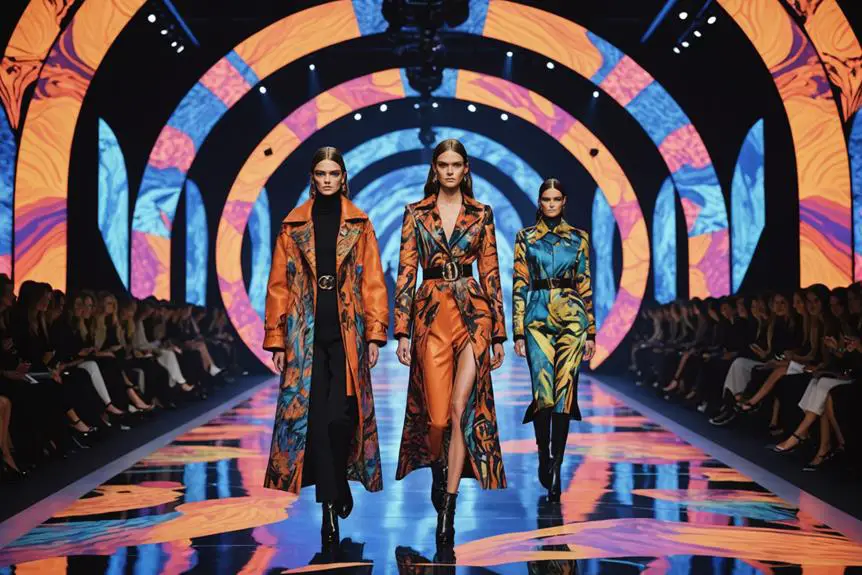
Cavalli Maison's future directions signal a commitment to both innovation and heritage, ensuring that the brand remains relevant in a rapidly evolving fashion landscape. As you explore the upcoming collections, you'll notice a strong emphasis on Roberto Cavalli's design philosophy, which continues to resonate through a glamorous and bold aesthetic. The brand's identity is deeply rooted in its heritage, and this foundation will guide future innovations.
Cultural sensitivity and accountability are becoming integral to Cavalli's design practices, reflecting a modern audience's expectations. Following its acquisition by DAMAC Properties in 2019, the brand is poised to expand into global markets, diversifying its product offerings while staying true to its luxury fashion roots.
Future collaborations and strategic partnerships are also on the horizon, which will not only enhance Cavalli's market presence but also align with evolving consumer preferences. By embracing these opportunities, Cavalli Maison aims to carve out a distinctive niche in the fashion industry, balancing the legacy of its founder with the demands of contemporary consumers. Ultimately, the brand's focus on innovation combined with a rich heritage positions it well for sustained success in the future.
Frequently Asked Questions
How Did Roberto Cavalli Start?
You'll find that Roberto Cavalli started by exploring his passion for textiles at the Academy of Art in Florence, later innovating fabric printing techniques, which led to his first collection debut at Paris's fashion salon.
What Are Some Interesting Facts About Roberto Cavalli?
You'll find Roberto Cavalli fascinating for his revolutionary leather printing technique, his first boutique in Saint-Tropez, and his bold use of animal prints, which greatly shaped luxury fashion's aesthetics and trends.
What Are the Accomplishments of Roberto Cavalli?
Roberto Cavalli's accomplishments include pioneering leather printing, launching a successful namesake collection, opening a boutique in Saint-Tropez, and introducing the Just Cavalli line, solidifying his status as a luxury fashion icon impacting multiple demographics.
Is Roberto Cavalli a High-End Brand?
Yes, you can definitely consider Roberto Cavalli a high-end brand. Its bold designs and luxurious materials, combined with a strong presence in exclusive boutiques worldwide, solidify its reputation as a leader in luxury fashion.
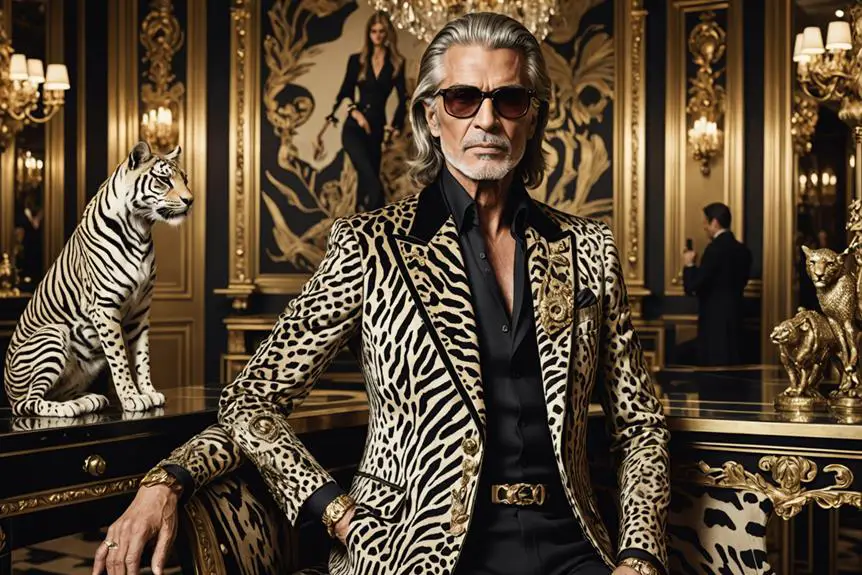

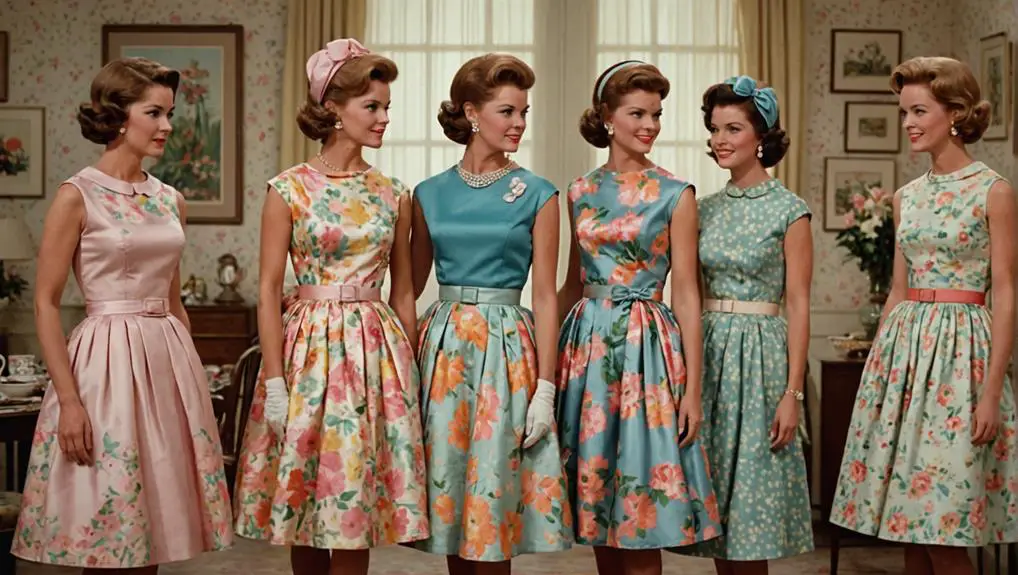

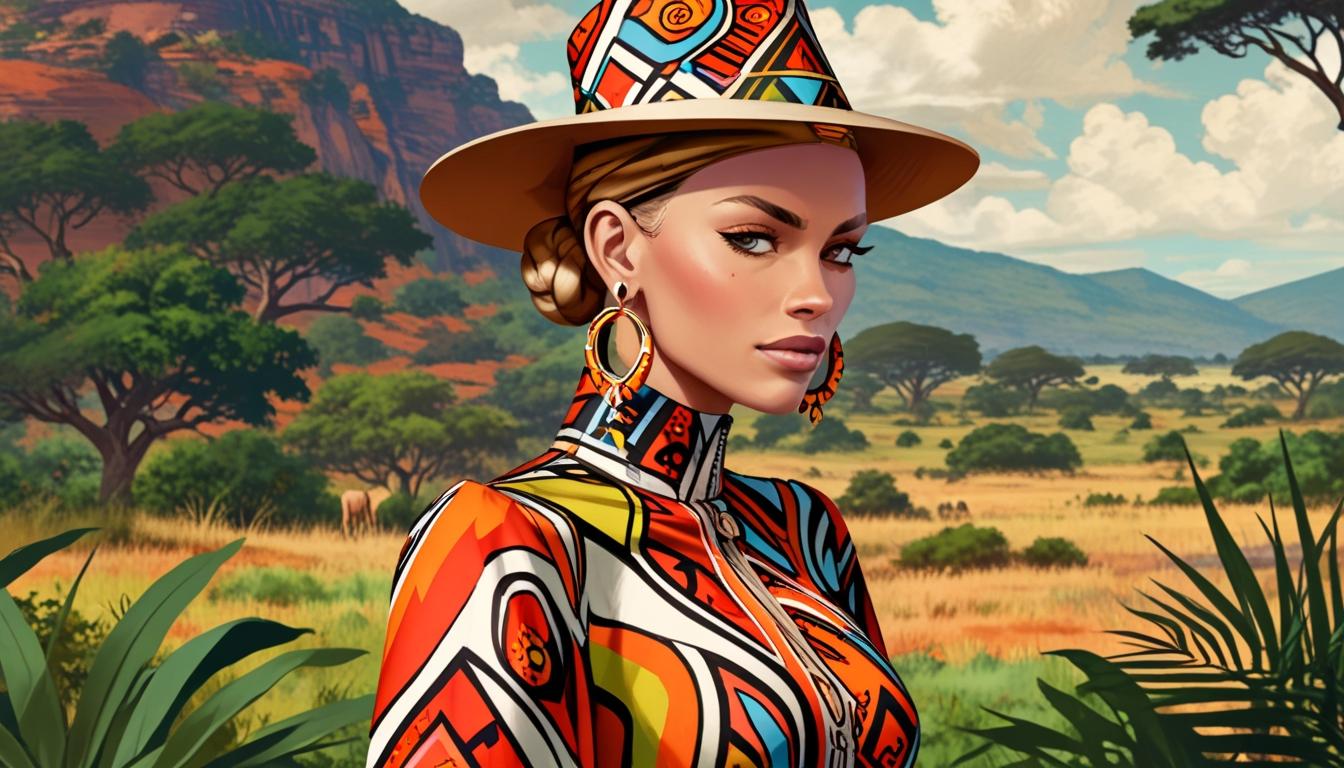
some really marvellous work on behalf of the owner of this web site, perfectly great articles.